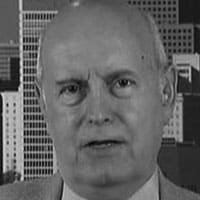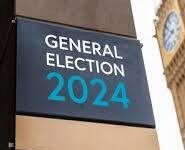Here is the NASA official Live Stream YouTube Channel
The Engineering of James Webb Telescope
…from Curiosity Stream
First published December 23, 2021
[ Editor’s Note: A weather forecast has pushed back launch until Saturday at 7:30 a.m. The European rocket has rolled out to the launch pad to begin its long pre-launch check list.
The scientists and engineers will be on pins and needles, with lots of praying that the launch goes smoothly and they don’t get to see $10 billion spent on the Webb and years of development since 2007 go up in smoke with a failed launch.
The Webb telescope has sucked up a third of NASA’s space budget, with the EU kicking in $700 million of the total budget.
Everything had to be designed from scratch, always a start-stop process, but the engineering investment will pay future dividends with the knowledge learned working for long periods in frigid space.
The five layers of heat shield made of a souped up mylar product reduces the sun side heat from 300 degrees to minus 400 on the telescope’s other side, where any heat bleed through would blind the telescope, rendering it into space junk.
The telescope had to have a origami type design so its sections could be folded to fit into the nose compartment of the EU Arianne rocket. That created a complicated unfolding process, where a failure of any of the components could also torpedo the mission.
The Curiosity Stream video below is a bit over 30 minutes, so you can watch it in segments if busy with expected holiday stuff. A successful launch will be a Christmas present to the world, as the Webb is going to search the depths of the infrared spectrum of the remaining faint light left from the birth of the universe, and everything in-between.
Hominids have been looking at the stars for 3 million years, and we Homo Sapiens have been gazing at them for 10,000 years; and hopefully in our lifetime, the James Webb telescope will take us to the birth of the universe, with a mission that unlocks the door to all that came before us… Jim W. Dean ]
 Jim's Editor’s Notes are solely crowdfunded via PayPal
Jim's Editor’s Notes are solely crowdfunded via PayPal
Jim's work includes research, field trips, Heritage TV Legacy archiving & more. Thanks for helping. Click to donate >>
*

Jim W. Dean is VT Editor Emeritus. He was an active editor on VT from 2010-2022. He was involved in operations, development, and writing, plus an active schedule of TV and radio interviews. He now writes and posts periodically for VT.
ATTENTION READERS
We See The World From All Sides and Want YOU To Be Fully InformedIn fact, intentional disinformation is a disgraceful scourge in media today. So to assuage any possible errant incorrect information posted herein, we strongly encourage you to seek corroboration from other non-VT sources before forming an educated opinion.
About VT - Policies & Disclosures - Comment Policy





Merry Christmas!
The telescope has made it off of the Earth safely.
The upper stage cutoff went without a hitch.
The next big event is LISA.
Here’s the thing I don’t understand: Astronomers say the James Webb Telescope will be able to look further back in time, close to the beginning of the universe, currently estimated to be around 13.7 billion years. We’ve known for years that the observable light spectra from the most distant galaxies is shifted to the red (Doppler Effect) because these galaxies are receding away from us at about ten percent light speed. Given that, and assuming the “Big Bang” occurred in one central location, wouldn’t that suggest the age of the universe at more like 10X, or, 137 billion years?
“Big bang occured in one central location.” 🤔
When “we” look through a telescope, we are looking back in time?🤔
In every direction of the cosmos, we are looking back in time?🤔
The earth must be the center of the cosmos?🤠
I remember hearing a talk from Carl Sagan, his ‘pale blue dot’ one, where he mentioned that we were this lonely planet on the edge of the universe. Hence I suspect the Webb telescope will want to be looking at the middle to see what clues are there in the infrared range that could tell us something new. The last two telescopes have really brought us a lot. So now we will have three in operation, and based on what we are getting from the James Webb, putting up a number two would cost a lot less because the huge technical development cost has already been absorbed. For this current one they will begin engineering a way to have a robotic flight that could recharge the James Webb, fuel for remaining in position and the movements it must make in selecting targets. A refill breakthrough would be a lot cheaper than replacing a dead telescope. My prayers tonight will be for no disaster on the launch.
Comments are closed.